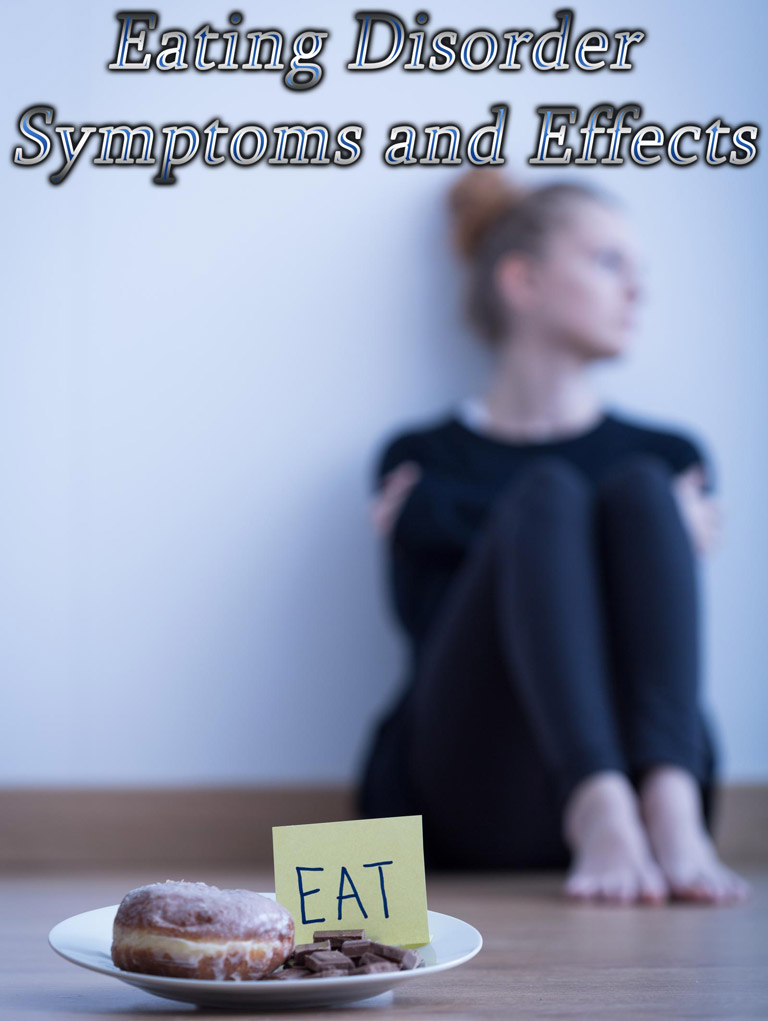
What Are the Warning Signs of An Eating Disorder?
Anorexia nervosa, bulimia, and overeating disorders can have numerous combinations of signs, symptoms and causes. Additionally, several other eating and body image disorders are closely related to anorexia and bulimia, including orthorexia, body dysmorphic disorder, and exercise addiction.
Many people who suffer with eating disorders show no outward signs, but still experience overwhelming internal feelings that prompt them to rely on symptoms to control intense pain, anxiety or other troubling emotions. Eating disorders are not a phase of adolescence or an expression of vanity. It is critical for a sufferer to seek medical treatment for eating disorders at the earliest sign of symptoms. Research shows that early and adequate intervention leads to the best clinical outcomes.
Disordered eating behaviors stand in the way of the healthy experience of emotional, social and spiritual development, and prevent the sufferer from living a full life. They are not “normal” efforts to “eat healthy”, and they require professional eating disorder treatment.
Behaviors associated with eating disorders may include:
- Constant adherence to increasingly strict diets, regardless of weight
- Habitual trips to the bathroom immediately after eating
- Secretly bingeing on large amounts of food
- Hoarding large amounts of food
- Increase in consumption of laxatives, diuretics or diet pills
- Exercising compulsively, often several hours per day
- Using prescription stimulant medications (like Adderall) and/or illicit stimulant drugs (like cocaine) to suppress appetite
Despite different symptoms, eating disorders share common roots that depend on genetics, environmental factors, medical history, life experiences, and the presence of co-occurring psychiatric and addictive disorders.
Common signs of the emotional changes associated with having an eating disorder are:
- Withdrawal from friends and family, particularly following questions about her disease or visible physical/medical side effects
- Avoidance of meals or situations where food may be present
- Preoccupation with weight, body size and shape, or specific aspects of one’s appearance
- Obsessing over calorie intake and calories burned via exercise, even as one may be losing significant amounts of weight
How Do I Recognize Symptoms of An Eating Disorder?
The signs and symptoms of eating disorders vary with the specific disease and its stage of progression. A brief overview of the common eating disorders is included below. For more complete descriptions see the detailed information section on each.
The most common eating disorders have different symptoms, but share common emotional triggers:
- Anorexia (anorexia nervosa): a disease where the sufferer starves themselves because of the desire to maintain an unrealistic and unhealthy body image
- Bulimia (bulimia nervosa): a disease that triggers the sufferer to consume very large amounts of food (binge), and then to rid themselves of excess calories (purge)
- Binge-eating disorder (eating disorder not otherwise specified): a disease where the sufferer compulsively overeats, often thousands of calories in a short period, and frequently in secret
Symptoms of Anorexia Nervosa
Anorexia nervosa is a disease where a woman is obsessed with food, body, and being thin, sometimes to the point of deadly self-starvation. This condition may cause her to exercise excessively or simply not consume enough food to meet her daily calorie needs.
Physical symptoms of anorexia may include:
- Underweight, even emaciated appearance with protruding bones or a sunken appearance to the face
- Fatigue
- Dizziness or fainting
- Brittle nails
- Hair that thins, breaks or falls out
- Menstrual irregularities or loss of menstruation (amenorrhea)
- Baby fine hair covering face and other areas of the body (lanugo)
Emotional and behavioral signs of anorexia nervosa may include:
- Refusal to eat
- Denial of hunger
- Excessive exercise
- Eating only a few certain “safe” foods, usually those low in fat and calories
- Adopting rigid meal or eating rituals, such as cutting food into tiny pieces or spitting food out after chewing
Symptoms of Bulimia Nervosa
Bulimia describes a disease where the sufferer moves through cycles of bingeing and purging. A woman with bulimic symptoms will eat a large amount of food in a short amount of time and then try to get rid of the extra calories by vomiting, laxative abuse or excessive exercise. In between these binge-purge episodes, she may eat very little or skip meals altogether. Weight is not one of the primary signs of bulimia nervosa, as sufferers may be underweight, normal weight or overweight.
Symptoms of bulimia may include:
- Abnormal bowel functioning
- Damaged teeth and gums
- Sores in the throat and mouth
- Scarring on the back of the hand/fingers used to induce purging
- Swollen salivary glands (creating “chipmunk cheeks”)
- Menstrual irregularities or loss of menstruation (amenorrhea)
- Irritation and inflammation of the esophagus (heartburn)
Behavioral symptoms of bulimia may include:
- Constant dieting
- Hiding food or food wrappers
- Eating in secret
- Eating to the point of discomfort or pain
- Self-induced vomiting
- Laxative use
- Excessive exercise
- Frequent bathroom trips after eating
Eating Disorders in Young Girls
Eating disorders can affect people of any age. In children, it’s sometimes hard to tell what’s an eating disorder and what’s simply a whim, a new fad, or experimentation with a vegetarian diet or other eating styles. In addition, many girls and sometimes boys go on diets to lose weight, but stop dieting after a short time. If you’re a parent or guardian, seek professional help to distinguish occasional dieting from the beginning symptoms of an eating disorder. Also, be alert for eating patterns and beliefs that may signal unhealthy behavior, as well as peer pressure that may trigger eating disorders.
What Are the Causes of Eating Disorders?
No one can state with certainty what causes eating disorders. As with other behavioral disorders, anorexia, bulimia, and other eating disorders most likely result from a complex interaction of biological, psychological, family, genetic, environmental and social factors.
Possible causes of eating disorders include:
Genetics and biology. Some women may be genetically vulnerable to developing eating disorders. Studies indicate that women with biological siblings or parents with an eating disorder may be predisposed to develop one too. There is also evidence that serotonin, a brain chemical associated with mood, may influence eating behaviors because of its additional connection to the regulation of food intake.
Psychological and emotional conditions. A woman with eating disorders may have contributing psychological and emotional factors. She may suffer from low self-esteem, perfectionism, anger management difficulties, or family conflicts and troubled relationships.
Social and cultural issues. Popular media often cultivates and reinforces thinness as the image of the ideal female. The media and entertainment industries often focus on appearance and body shape. It is easy for a woman with a predisposition towards an eating disorder to come to believe that success and worth are often equated with being thin. Peer pressure may also fuel this obsession, particularly among young women.
It is important to note that anorexia nervosa, bulimia, and binge eating disorders are often accompanied by co-occurring psychiatric or addictive disorders (sometimes referred to as a dual diagnosis). The risk of complications from coexisting conditions makes critical to seek an assessment from a professional who focuses significant time on eating disorder treatment.






Leave a Reply